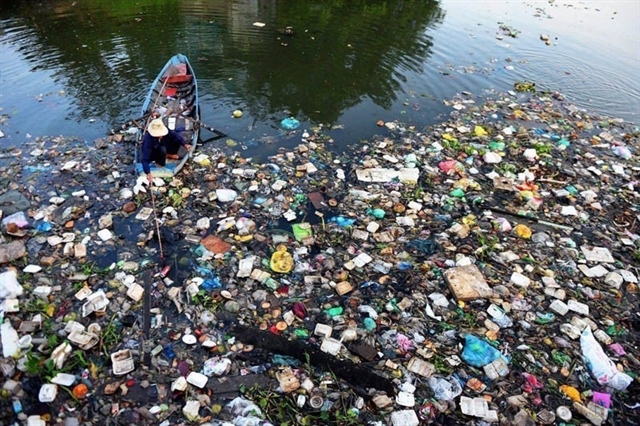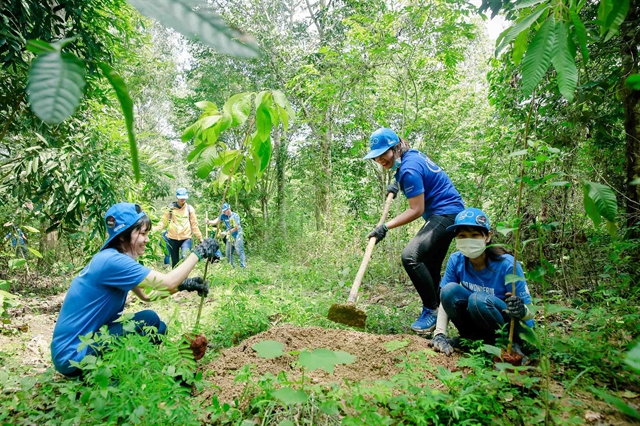 Environment
Environment


|
| A programme to restore Đồng Nai World Biosphere Reserve creates an abundant food source for elephants and other wild species. Photo courtesy of the Gaia |
HCM CITY— More than 1,000 trees of five species of native timber trees and wild plants were planted on 20,000 sq m in Đồng Nai World Biosphere Reserve on June 25-28 as part of Forest Plantaion Day.
Planting is part of the programme titled "Forest Plantation and Monitoring" which Gaia Nature Conservation continues to carry out to enrich the Đồng Nai forest.
The kinds of trees include Huỷnh (Palapi), Mít rừng (Wild Jackfruit), Chôm chôm rừng (Wild Rambutan), Xoài rừng (Wild Mango), and Sấu (Dracontomelon duperreanum).
The aim of the programme is to recover poor forests, supplement food sources and improve the habitats of elephants and endangered wildlife such as gaur, hornbill and black-shanked douc.
The reserve is the habitat for one of the last populations of wild elephants in Việt Nam.
Less than 50 wild elephants live in the wild in Việt Nam. Of those, 11-14 live in Đồng Nai.
In 2010, seven wild elephants could not find enough food in the forest and died after looking for cashew and mango fields. Farmers saw them as a threat and poisoned them.
After this tragedy, Đồng Nai World Biosphere Reserve installed 50 kilometres of electric fencing to prevent elephants from going into residential areas.
However, a few elephants have managed to break through the fence.
Restoring forests and creating an abundant food source for the elephants and other wild species is a long-term solution to the problem.
The forest will be monitored and taken care of for four years to ensure its sustainability.
The participants in Forest Plantation Day were guided by Gaia to conduct research and monitor activities in the forest such as developing lists of flora and fauna species, measuring forest coverage and tree height, and taking photos.
The plantation days have become a memorable community volunteer event for more than 250 employees at Intel Products Vietnam.
For many, this is the first time they have been able to pick up shovels, plant forests and take care of trees.
In addition, a forest bathing trip after forest plantation not only helped participants recover their energy but also improved their understanding about the amazing sights in the jungle such as Strangling Ficus (Đa bóp cổ), special leaves of Ancistrocladus tectorius (Trung Quân), and vines that grow counter-clockwise in the northern hemisphere.
Đỗ Thị Thanh Huyền, founder and director of Gaia Nature Conservation Center, said: “During urbanisation, the total area and quality of the forest in Việt Nam is decreasing and we are seeing habitat loss and an ecological loss of function.”
In the future, Gaia will continue to promote forest planting and monitor programmes in other places such as Tràm Chim National Park and Cần Giờ Biosphere Reserve.
Gaia has called for support from companies, schools and individuals to join Gaia in the forest plantation and monitoring programme to improve overall forest function, protect endangered species, and restore and enrich the forest. VNS